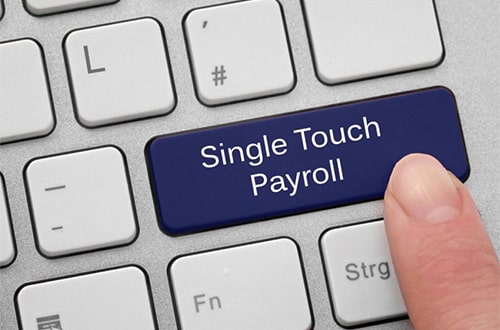Australian Taxation Office (ATO) has confirmed that from 1 July 2021, all small employers will have to register for Single Touch Payroll (STP). This published fact sheet contains all the necessary details and information related to single touch payroll for employees.

In this article, ClockOn has assembled all the necessary ATO guidelines related to ATO STP reporting.
Closely Held Employees - Single Touch Payroll Exemptions
The Australian Taxation Office (ATO) has published several fact sheets that affirm that all small employers (those with 19 or fewer employees) will have to commence reporting amounts paid to closely held payees through STP from 1 July 2021. Earlier, small employers with a holding payer number (WPN) were exempted from reporting closely held employees through STP for the 2019–20 and 2020–21 financial years.
But, who are these closely held payees?
A closely held payee is someone who is directly related to the entity, business, company, or trust that pays them. A closely held payee could be:
- Directors or Shareholders of a company
- Family members of a family business
- Beneficiaries of a trust
In case any employer only has closely held payees in their entity, they can commence STP reporting from 1 July 2021. However, such small employers are not required to inform the ATO regarding having only closely held payees in the business.
Note: Small employers will have to continue to report all the information about their other employees, who are also known as arm's length employees, via STP on or before each date of payment.
How To Report Closely Held Employee Data through STP?
From 1 July 2021, small employers may report closely-held employee information via STP in three following ways:
- Report on or before the statutory date of payment - whenever a payment is made to a close held payee, small employers will have to report the information on or before each pay event.
- Report actual payments every quarter — report all payments made to the closely held payee in each quarter, when the activity statement for that quarter is due.
- Report a reasonable estimate every quarter — report amounts equal to or greater than a percentage of gross payments and tax withheld from the latest financial year, every quarter.
Let's understand each reporting method in more detail:
1. Report payments on or before the date of payment
Any small employer having closely held payees can choose to report amounts paid to those payees on or before the statutory date of payment. Small employers must also report the amount paid to other (arm's length) employees using this method.
When small employers choose to report amounts paid to their closely held payees on or before payday, a set of general rules for reporting in STP is applied which they have to follow mandatorily. If small employers choose this method, they will receive more time to make a finalisation declaration for their closely held payees.
The general rules applied for reporting closely held payees in STP is similar to what small employers would do for your arm's length employees. However, they must still:
- Include any pay as you go (PAYG) withholding amounts on the activity statement
- Pay the amount owed to ATO by the due date
- Make super guarantee (SG) contributions for their payees before the quarter due date.
Note: The closely held STP report cannot be registered through ATO portals or as part of an activity statement. It must be lodged through a single touch payroll software solution, similarly to STP reporting for arm’s length employees. Any small employer can lodge STP reports themselves or through a registered agent.
2. Report actual payments every quarter
Small employers can also choose to report the total amounts paid to their closely held payees every quarter rather than reporting on or before the statutory date of payment.
When reporting quarterly, small employers can rectify their closely held payee’s year-to-date information until the next quarterly report due date. In case the closely held payee is excluded in the next quarterly STP report, the employer can either:
- Include the rectified amount in the current quarterly report or
- Lodge an update event
If employers choose to report this way, they still need to:
- Include any PAYG withholding amounts on the activity statement
- Pay the amount owed to ATO by the due date
- Make SG contributions for their closely held payees before the quarter due date.
Employers opting for this reporting way will need to check with their software providers as to how this is offered. Those employers who have arm’s length employees and also choose quarterly reporting for closely held payees will have to lodge a report each payday for their other employees as well as a closely held payee report on quarterly basis.
3. Report a reasonable estimate every quarter
Small employers need to make a reasonable estimate of the amounts they have paid to their closely held payees during the quarter and report that estimate through STP.
While making a reasonable estimate, employers will have to consider all circumstances. If the circumstances are different from the year where they have completed a finalisation declaration, ATO will accept a year-to-date amount in STP quarterly reporting that is equal to:
- Q 1 - 25% of the total amount reported in that previous year
- Q 2 – 50% of the total amount reported in that previous year
- Q 3 – 75% of the total amount reported in that previous year
- Q 4 – 100% of the total amount reported in that previous year
In case the circumstances have changed, employers can adjust their estimates to help reflect those changes and avoid overpaying or underpaying situations.
What Is The STP Due Date of Finalisation Declaration For Closely Held Employees?
Small employers should make a finalisation declaration by the due date of their closely held employees individual tax return. For a finalisation declaration for arm's length employees, the due day is 14 July following the end of the financial year.
We have recently launched a new Payroll and Single Touch Payroll (STP) offering. Our ATO STP Software is now free for up to 20 employees, making us the first payroll solutions in Australia to provide such an offer.
For more information related to the latest STP changes and news, refer to the Australian Taxation Office (ATO) portal







